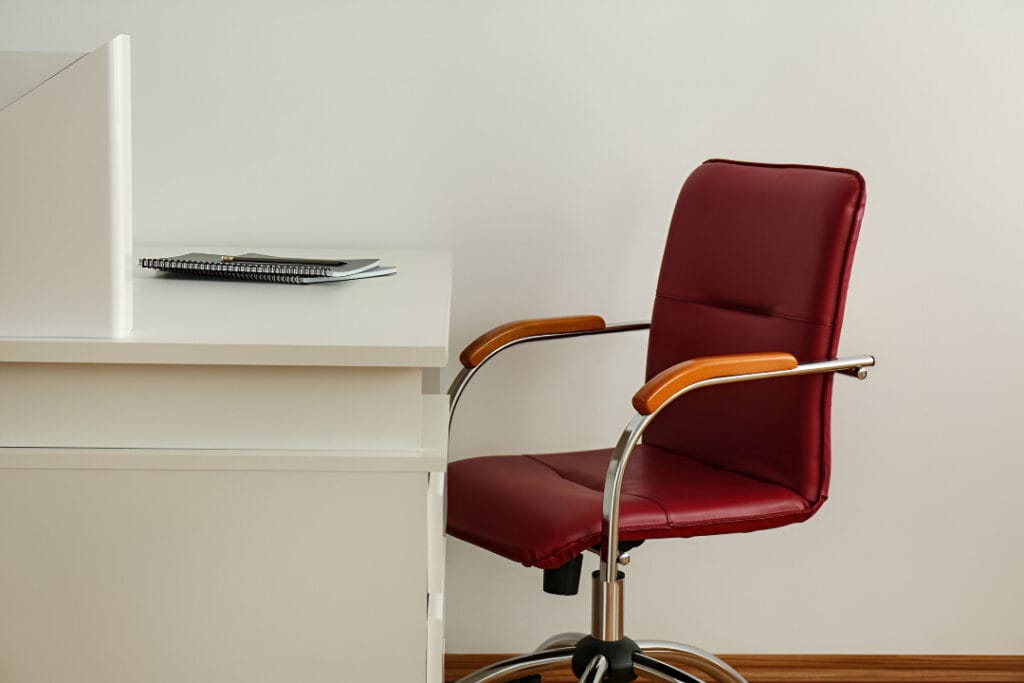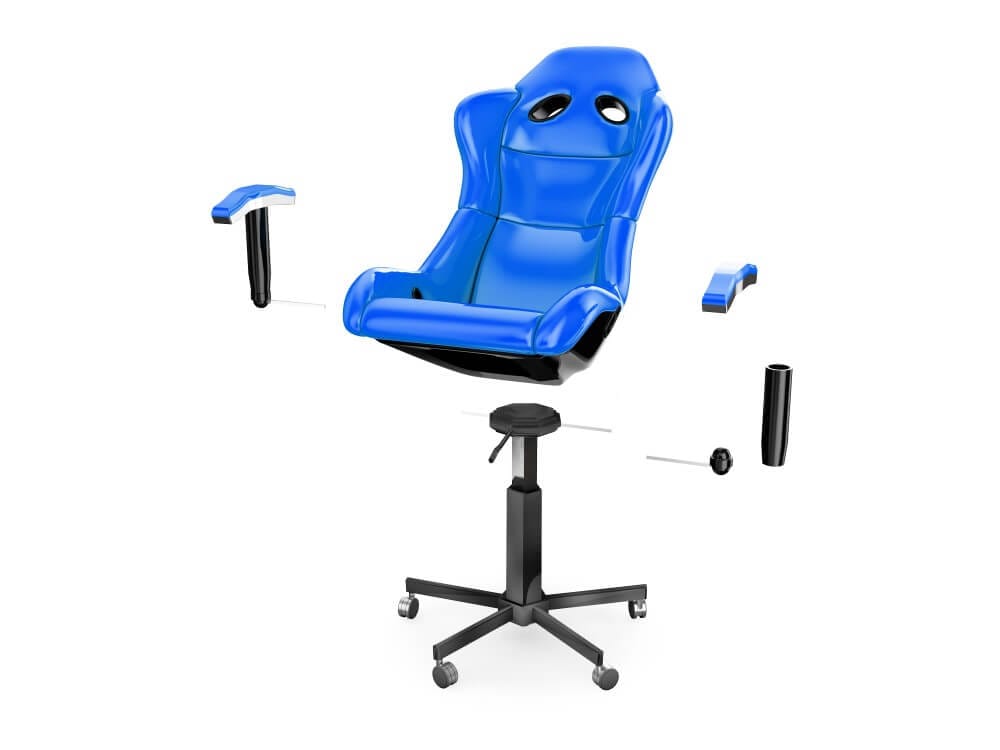
Is Your Office Chair Ergonomic? A Checklist
With longer hours spent sitting, having an ergonomic chair matters more than ever. Use this checklist to find one that supports good posture, reduces strain, and keeps you comfortable.
By:
The Good Home Daily
Posted on April 8, 2025
Nowadays, we spend a lot of time sitting, especially as working from home has increasingly become the trend. According to data from the National Bureau of Economic Research in the US, remote workers extended their workday by 48.5 minutes, which means more sitting time for employees. But let’s face it, working isn’t the only thing we do. We also study, relax, and play for long hours. That’s why having an ergonomic chair has become more important than ever.
According to a study, ergonomic chairs play a huge role in reducing musculoskeletal symptoms such as back pain, neck pain, and shoulder stiffness, among office workers who sit for prolonged periods.
But what exactly makes a chair “ergonomic”? How can you make sure you’re buying a chair that supports good posture and won’t cause spinal strain?
In this guide, we’ll create an office chair checklist to help you find the right ergonomic chair. We’ll focus on the key features to look for when buying one.
Comfortable vs. Ergonomic Chairs: What's the Difference?

For starters, all ergonomic chairs provide a pleasant seating experience. However, not all comfortable chairs are ergonomic.
There are key distinctions between comfortable chairs and ergonomic ones. The most obvious difference is in the duration of the sensory pleasure they offer.
Comfortable chairs provide immediate comfort and sensory satisfaction. These chairs feel plush and soft, thanks to their quality materials. They may be supportive at the moment, but they may not necessarily align with proper body mechanics. This means that using them for extended periods may lead to body strain.
Ergonomic chairs are different—they are built to support your body not just in the moment but over time.
Ergonomic chairs are designed with one key principle in mind—neutral posture. This is the position where your body is naturally aligned, your joints are at ease, and your muscles are not overworked. According to the CDC, maintaining a neutral posture helps reduce strain on your muscles, tendons, and nerves and allows your body to function at its best.
To achieve and maintain this ideal posture, ergonomic office chairs offer features like adjustable lumbar support, armrests, and seat height. (We’ll talk more about ergonomic features later.)
So, while both types of chairs may feel good at first, only ergonomic ones are designed to support your comfort and well-being over time.
7 Key Features of an Ergonomic Chair

Finding an ergonomic chair can be very tricky. After all, the concept of ergonomics is rooted in the idea of designing products to fit the user, not the other way around.
This also means that an ergonomic chair can be ergonomic for one person but not for another.
So, when choosing the best ergonomic chair, many factors must be considered, such as body size and shape, posture, habits, specific health concerns, and work environment.
To ensure an ergonomic chair truly fits your needs, you need to look for the following features:
1. Adjustable Features
Customizability and adjustability are the most important features of an ergonomic chair. You can’t call your chair ergonomic if it cannot adapt to its user.
Unlike traditional chairs, ergonomic chairs allow for personalized adjustments to seat height, backrest angle, and armrest position.
The best ergonomic chairs are the ones that can accommodate different body types and their unique requirements. For example, taller individuals should be able to elevate the seat to maintain proper posture. Similarly, those of shorter stature should be able to lower it to ensure their feet rest comfortably on the floor.
When buying an ergonomic chair, the rule of thumb is that it should allow you to place your feet flat on the floor.
2. Seat Width and Depth
Similar to height, the width and depth of the seating are also important. Unfortunately, not all ergonomic chairs offer adjustable seat dimensions. So, before purchasing an office chair, make sure the seat provides adequate space and support.
Our suggestion is to find a seat that has a 2-4 inch gap between the edge of the seat and the back of your knees. This ensures proper blood circulation and prevents discomfort in the lower legs.
3. Proper Lumbar Support
Proper lumbar support is a non-negotiable feature in an ergonomic chair. This feature plays a huge role in supporting our lower back, specifically the natural curve of our spine and pelvis.
Look for a chair with an adjustable backrest. That way, you can customize it to fit the contours of your lower back. By aligning the lumbar support with the curve of your lower back, you can ensure optimal comfort and posture throughout the day.
4. Reclining Backrest
Choose an office chair that has a reclining feature. This is important, especially for employees who work in front of a computer for long periods each day. As the workday progresses, our posture can deteriorate, leading to tension and pain.
A reclining chair allows users to lean back and adjust their posture. This helps alleviate pressure on the upper body. What’s more, this brief change of position promotes better blood circulation and reduces muscle tension.
5. Armrest
When buying office chairs, we often overlook arm support. However, this feature is crucial for ergonomics as it directly impacts comfort and posture. The armrests of a chair provide support for your arms and shoulders, helping alleviate tension and prevent strain.
When choosing an ergonomic chair, make sure that the armrests are adjustable. Moreover, they should allow your arms to rest at a 90-degree angle. This is an ideal position for proper posture, reducing the risk of slouching or hunching.
6. Headrest
The headrest is another important ergonomic feature of a chair. This essential part supports the back of your head and upper neck, significantly reducing upper body tension. Moreover, it promotes better posture by discouraging the common tendency to hunch over.
Ideally, you want to choose an ergonomic chair with an adjustable headrest. That way, you can find the perfect height and angle to enhance your comfort.
7. Breathable Material
Yes, fabric is also an important feature. It can directly impact overall comfort and the seating experience. That is why you need to find a chair with soft, breathable, and supportive material.
Our suggestion is to look for a chair made of mesh material. This is an excellent choice for the climate in the Philippines, as it promotes airflow, keeping users cool and comfortable. It also adapts well to different body shapes.
Other popular choices include leather and velvet; however, they can be a bit pricey. Moreover, some leather chairs do not provide adequate ventilation, which can cause excessive sweating and discomfort.
Find an Ergonomic Fit
Remember, the perfect ergonomic chair isn’t one-size-fits-all. However, by prioritizing the features we’ve mentioned above, you are on the right track to finding the ideal ergonomic chair.
With the right ergonomic chair, you can promote good posture, enhance productivity, and boost your overall well-being.

